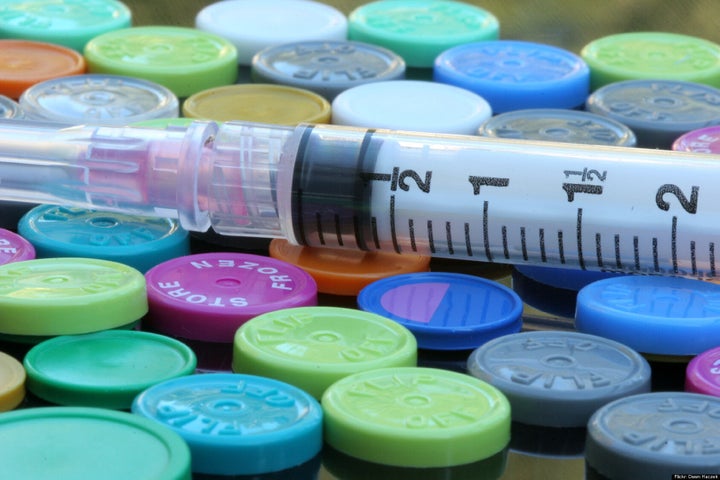
For cancer patients, what is the "acceptable risk" that a drug will pose safety risks or won't work properly? That's one of the thorny questions addressed by the FDA last week in a two-day, open-to-the-public meeting about "biosimilar" drugs -- second-generation versions of drugs made from living organisms, or "biologics."
Developing medicines from living organisms sounds like a plot directly from a B-grade Halloween movie. Heard of insulin? One type, Humulin, was the first biologic marketed, in 1982. Since then, the FDA has approved dozens of biologics for a wide range of uses, such as Abraxane, a chemical wrapped in human proteins, for breast cancer. Studies are continuing on novel products such as Desmoteplase, made from vampire bat saliva, for stroke victims.
Biologics are different from typical chemical prescription drugs in important ways. Generic drug companies can make virtually identical copies of non-biologics like Lipitor and Prozac. Once the original drug maker's exclusivity period expires, generic drug makers can apply for FDA approval, piggybacking on the original company's safety and effectiveness studies, rather than spend millions to develop their own. As a result, the company can offer generic drugs at a fraction of the original cost, allowing patients to save dramatically for medicines of equivalent safety and efficacy.
Yet biologics are different: just as no two living things are precisely identical, it isn't possible to create a truly identical "generic" version of a biologic drug. At most, a second-generation drug maker can create a version that is similar to, but not the same, as the original -- thus the term "biosimilar." But depending on how similar it is, a "biosimilar" may or may not be equally as safe and effective as the original biologic.
This begs the question before the FDA: When it comes to granting FDA-approval to a biosimilar, allowing the drug maker to bypass much of the FDA approval process for biologics, how similar is "similar enough" to keep patients safe?
As a matter of common sense, the FDA's process for biosimilars shouldn't sacrifice patient safety. After all, biologics are more complex than other pharmaceuticals, implying an enhanced need for scrutiny. But against the backdrop of the burgeoning biologics market, some biosimilar drug companies are arguing for more lenient safety requirements.
In a recent White Paper funded by an Indian biosimilar drug maker, the authors criticize Europe's strict requirements, advocating for India's laxer model. The authors point out that the relaxed regulatory requirements mean that some of the world's best, most effective drugs are widely available in India at a much lower price. True, but so are the world's worst, least effective drugs: India is a haven for the manufacture, sale and transit of expired, adulterated and unregulated medicines, including those sold by fly-by-night "rogue" Internet pharmacies. For example, India does not require biosimilar drug makers to evaluate virus clearance, or test whether the drug provokes an immune response. (This would seem to be desirable for a drug derived from vampire bat saliva.)
But perhaps most troublingly, the paper's authors argue that the economic downturn should prompt us to relax our safety standards more than we would if patients were not having a hard time making ends meet. They suggest that as long as the biosimilar drug can be sold more cheaply than the original, there is a level of "acceptable risk" to a patient that is justified by making the drug more widely accessible at a lower cost.
The notion that some adverse reactions can be viewed as an "acceptable risk" begs the questions: Which patients shall we put at risk? What kind of risk is acceptable? At what cost? Is it really good policy to lower safety standards in order to ensure greater access to medicines that may be more dangerous?
Biosimilars hold enormous promise: life-saving medications accessible by a greater number of Americans at a reduced cost. But if the biosimilars fail to have the same efficacy and safety as the original, it's the patient who may pay the biggest price. And if our medical system begins to view patients as mere numbers we will have already slid too far down the proverbial slippery slope.
The reason that generic (non-biologic) drugs are seen as safe and reliable alternatives to more-expensive brand medications is that the FDA has, by and large, held generic drug makers to the same high standards as the original manufacturer, refusing to dilute safety requirements. In developing a process and standards for biosimilar drugs, the FDA should hold biosimilar drug makers to those same high standards.